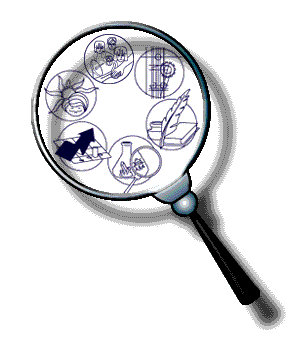
 |
1 definition found
From The Collaborative International Dictionary of English v.0.48 [gcide]:
Ignis fatuus \Ig"nis fat"u*us\; pl. {Ignes fatui}. [L. ignis
fire + fatuus foolish. So called in allusion to its tendency
to mislead travelers.]
1. A phosphorescent light that appears, in the night, over
marshy ground, supposed to be occasioned by the
decomposition of animal or vegetable substances, or by
some inflammable gas; -- popularly called also
{Will-with-the-wisp}, or {Will-o'-the-wisp}, and
{Jack-with-a-lantern}, or {Jack-o'-lantern}. It is thought
by some to be caused by phosphine, {PH3}, a sponaneously
combustible gas.
[1913 Webster + PJC]
Will o'the Wisp -- which also rejoices in the names
of Ignis Fatuus or Jack o'Lantern -- is not, as some
of you may think, a cartoon character. In mediaeval
times this chemical phenomenon struck terror into
travellers and, very likely, lured some of them to
their deaths in a stinking and marshy grave.
I have never seen this Will o'the Wisp; nor am I
likely to do so. It is a flickering flame seen over
marshes; marshes are not now common in London, nor
indeed anywhere else in Britain. In any case the
ephemeral nature of the phenomenon and the enormous
amount of ambient light [ldqo]pollution[rdqo] found
in most areas means that most of us will never see
it.
What is this Will o'the Wisp? Popular chemical lore
has it that it is marsh gas, or methane, which
catches fire when it hits the air because of the
presence of either phosphine ({PH3}) or diphosphine
({P2H4}) in the gas, both of which are spontaneously
flammable in air. Methane is certainly formed in
marshes, and bubbles up if the mud is disturbed in a
pond, say. It is the same reaction that enables
organic materials to produce biogas, methane from
the decomposition of sewage, which can be profitably
used. But is it this that is burning in Will o'the
Wisp?
Almost certainly not. At this point I will say that
I have thought for some years off and on as to how
one might set up an experiment to test the
hypotheses, since the sporadic and rare nature of
the natural version renders its investigation a
highly intractable problem. However: the combustion
of methane under the conditions in a marsh would
give a yellow flame, and heat.
Will o'the Wisp is not like this, so it is said.
Firstly the flame is bluish, not yellow, and it is
said to be a cold flame. The colour and the
temperature suggests some sort of phosphorescence;
since organic material contain phosphorus, the
production of phosphine or diphosphine is scarcely
impossible, and maybe it does oxidise via a mainly
chemiluminescent reaction. The exact nature of the
Will o'the Wisp reaction nevertheless remains, to me
at any rate, a mystery. Similar phenomena have been
reported in graveyards and are known as corpse
candles. If anyone knows anything more, I would love
to hear of it. A warning that if you look for it on
the Web, you will get a great deal of bizarre stuff.
You will also get the delightful picture from a
Canadian artist which decorates the top of this page
(http://www.rod.beavon.clara.net/willo.htm), and a
couple of poems at least. One is also by a Canadian,
Annie Campbell Huestis, the other by the prolific
fantasy poet Walter de la Mare.
The preparation of phosphine in the laboratory (by
the teacher!) is fun, and perfectly safe in a fume
cupboard. White phosphorus is boiled with aqueous
sodium hydroxide solution in an apparatus from which
all air must have been removed by purging with, say,
natural gas. The phosphine will form marvellous
smoke rings if allowed to bubble up through water in
a pneumatic trough. This is an experiment for the
teacher, needless to say. The experiment is
described in Partington J.R., [ldqo]A Textbook of
Inorganic Chemistry[rdqo], 6th ed, Macmillan 1957, p
572. (So, inter alia, is a great deal of other
interesting chemistry.)
Dr. Rod Beavon
17 Dean's Yard London SW1P 3PB
e-mail: rod.beavon@westminster.org.uk
[PJC]
2. Fig.: A misleading influence; a decoy.
[1913 Webster]
Scared and guided by the ignis fatuus of popular
superstition. --Jer. Taylor.
[1913 Webster]
Powered by Blog Dictionary [BlogDict]
Kindly supported by
Vaffle Invitation Code
Get a Freelance Job - Outsource Your Projects | Threadless Coupon
All rights
reserved. (2008-2025)